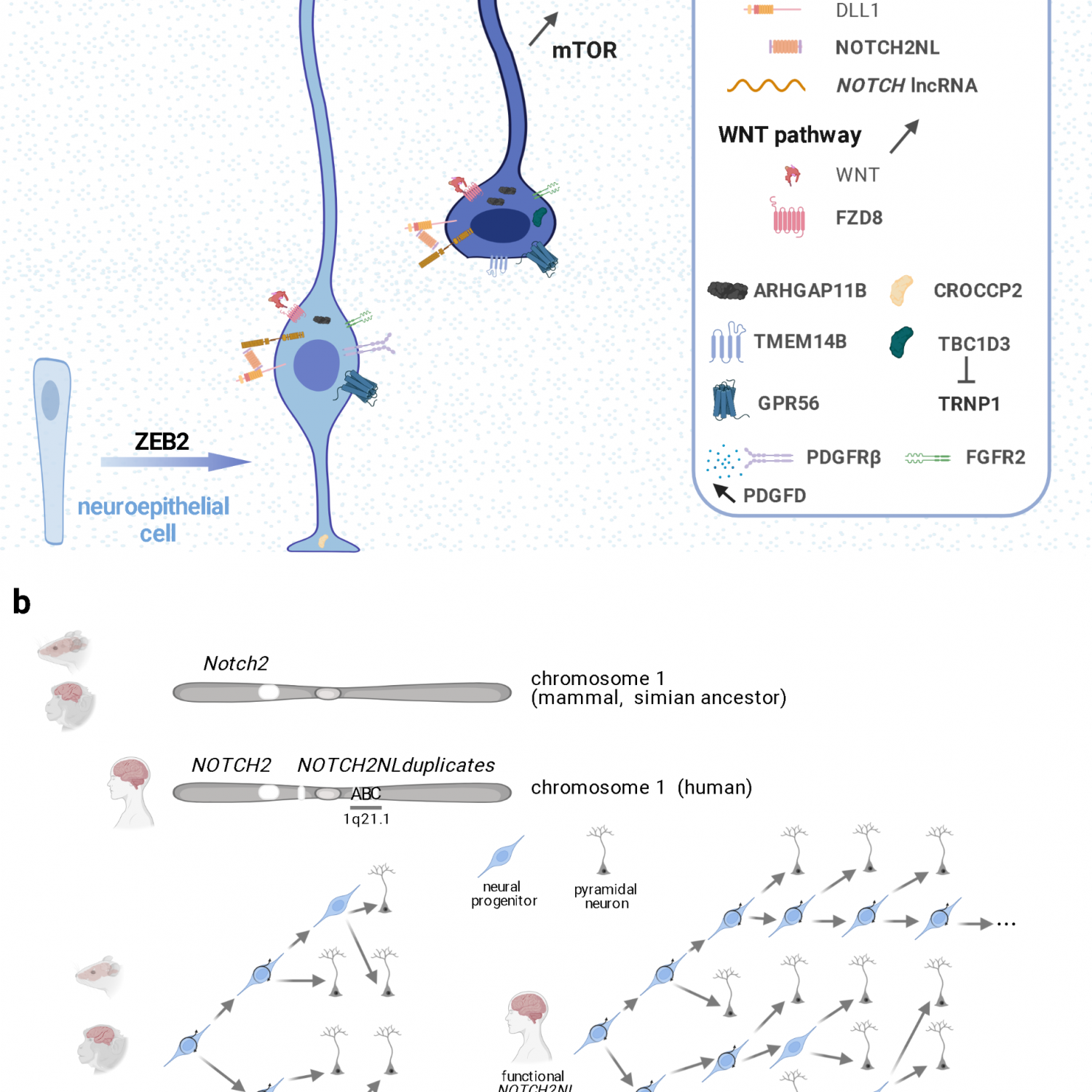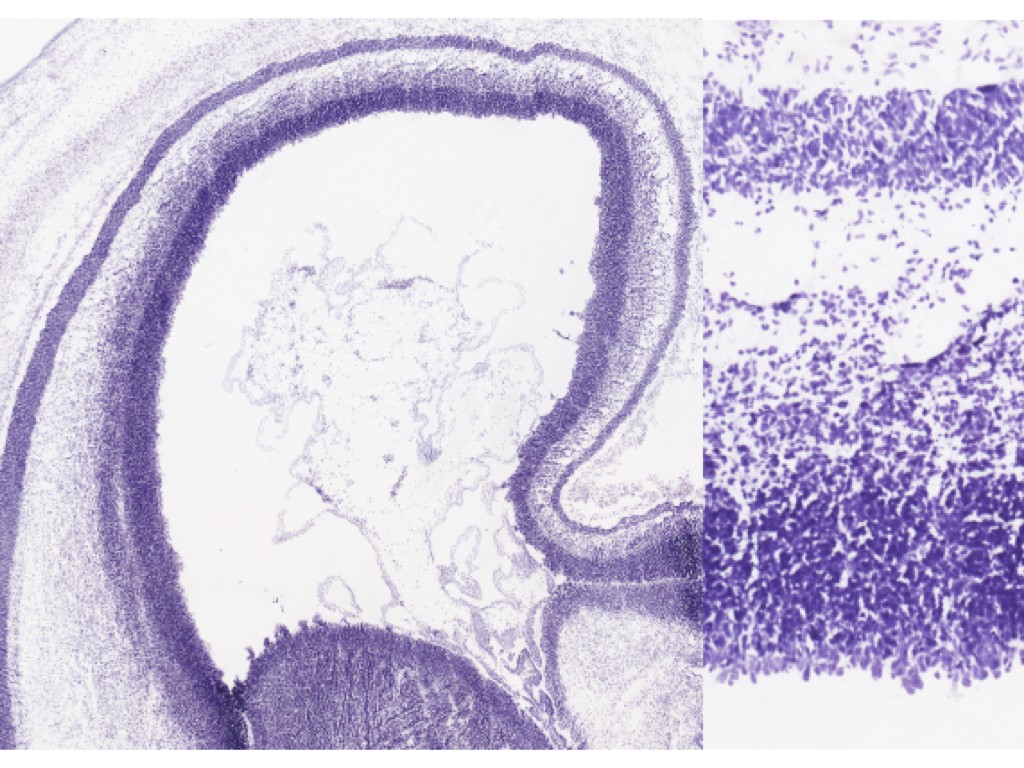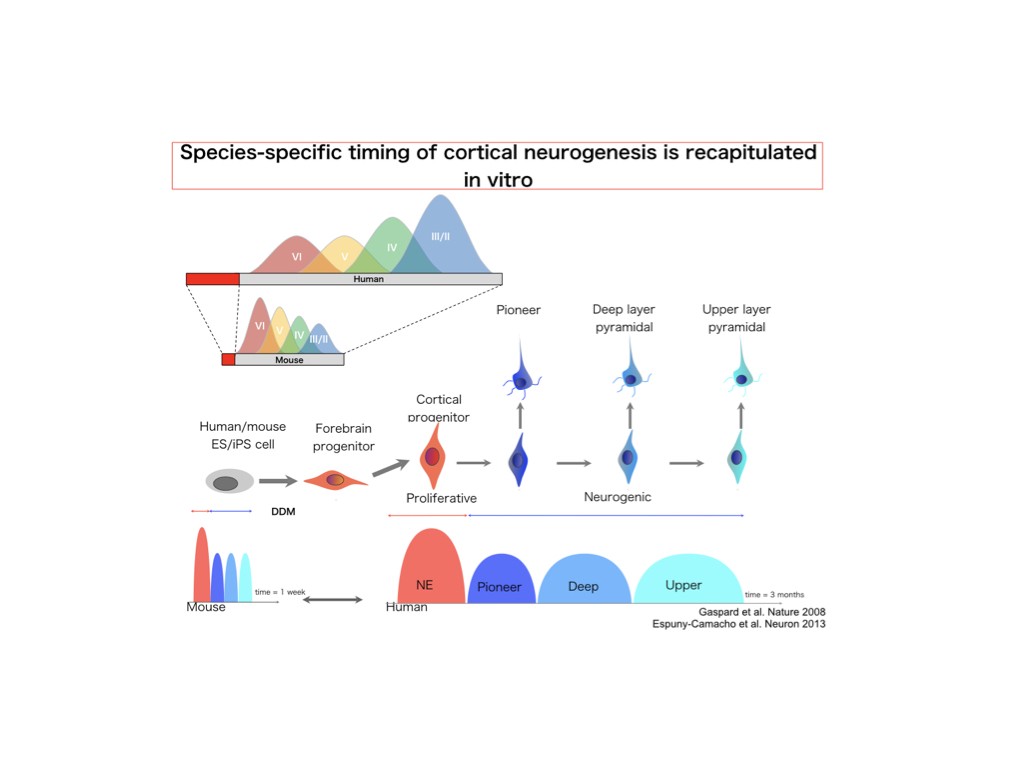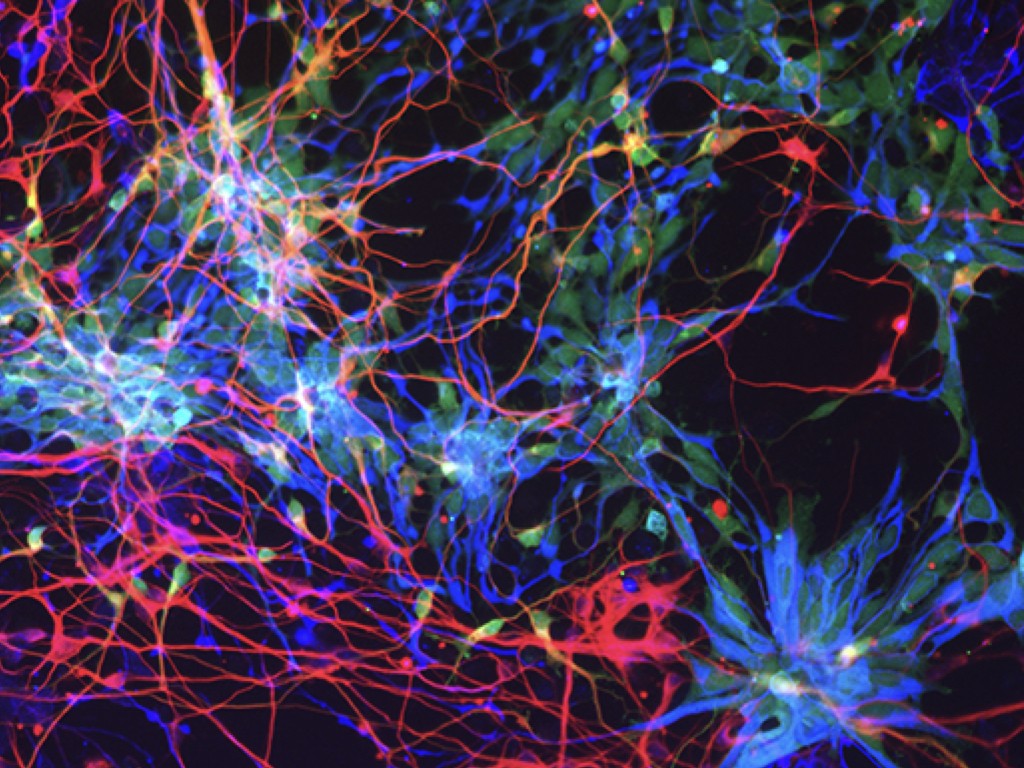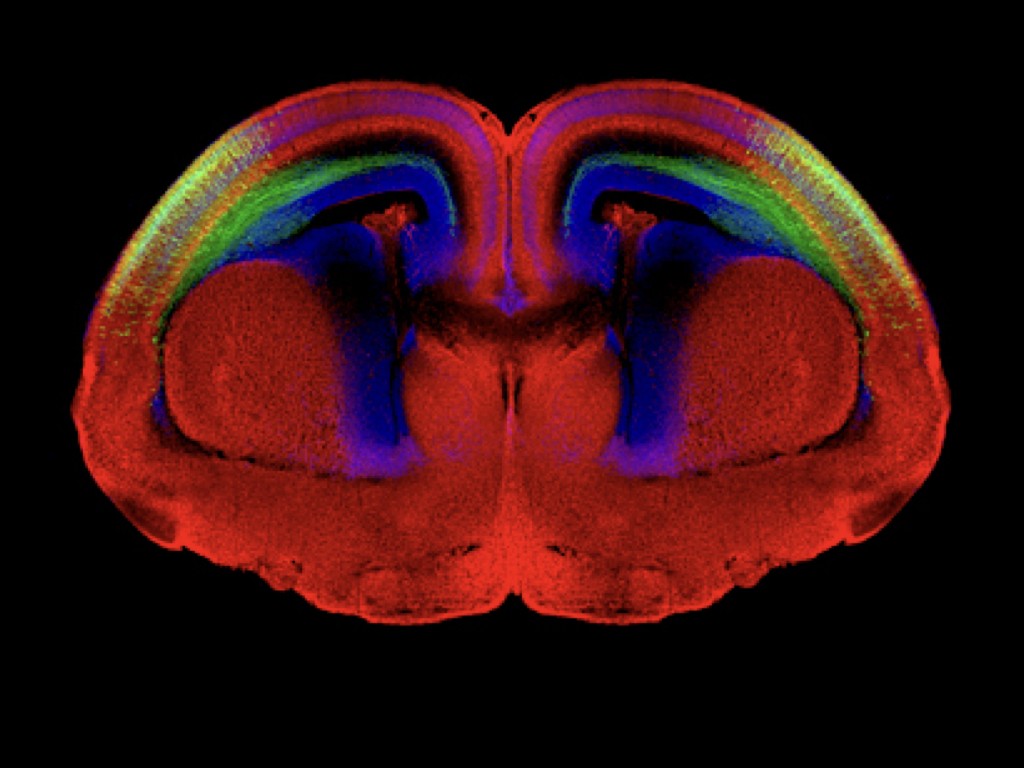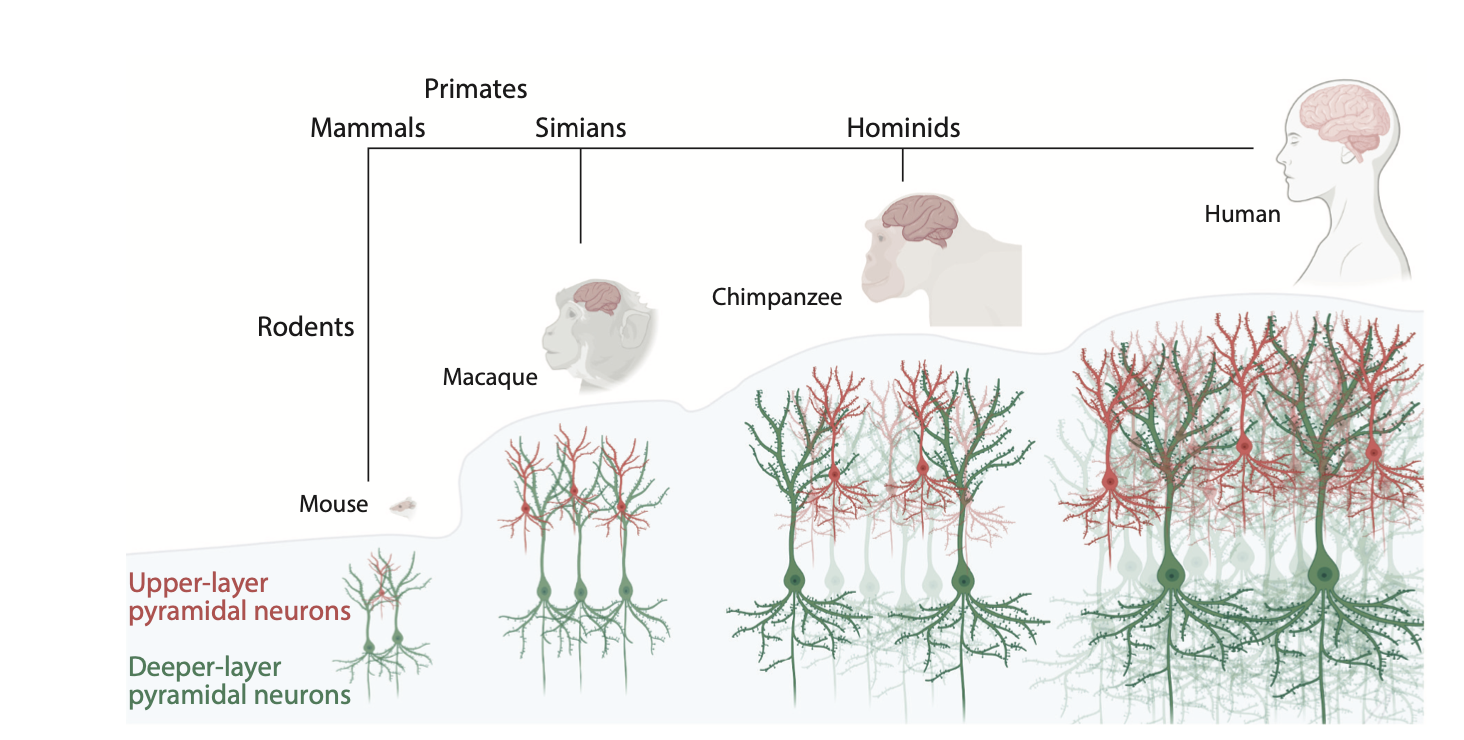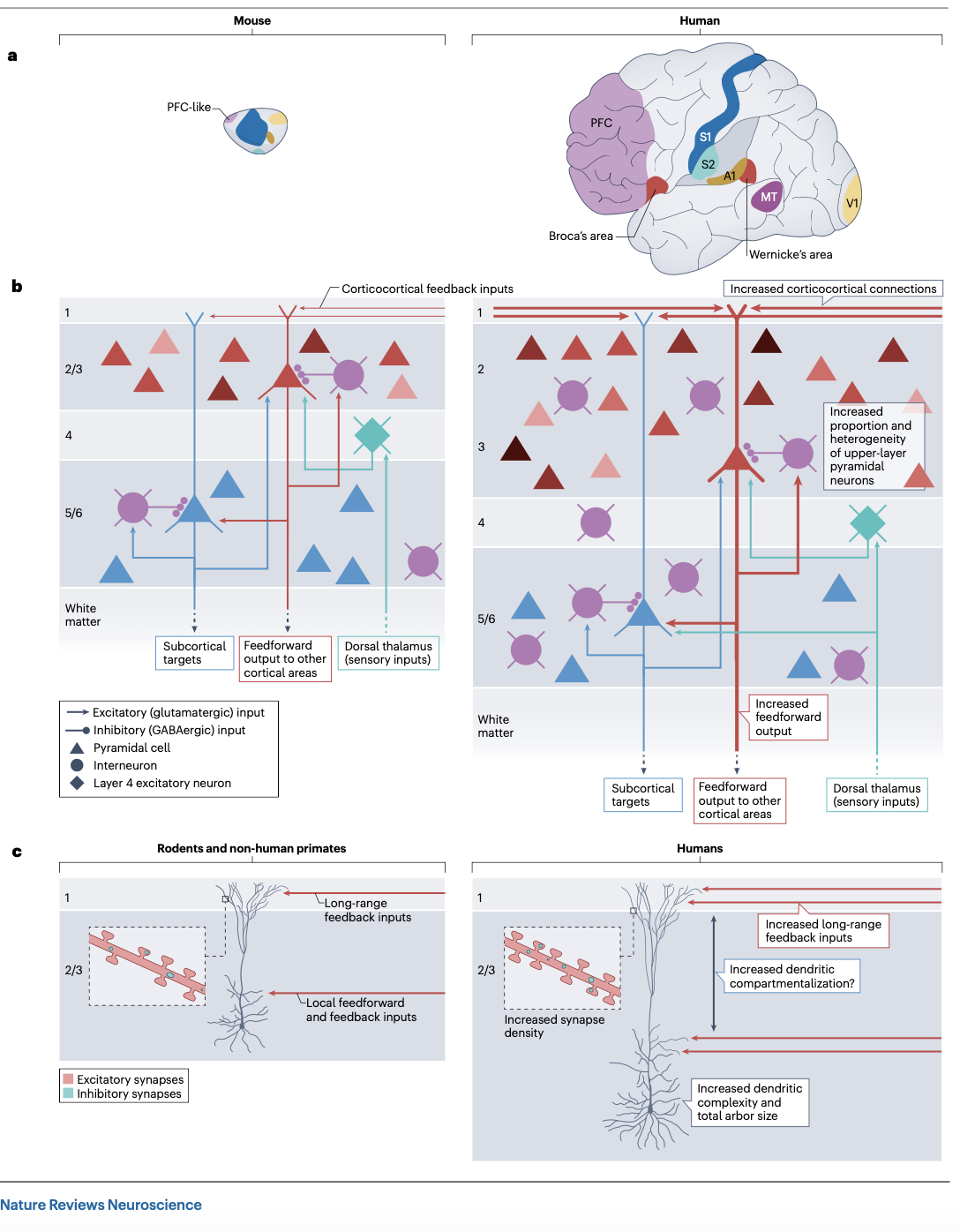INTRODUCTION
The cerebral cortex underwent rapid expansion and increased complexity during recent hominid evolution, with significant impact on the acquisition of higher functions in the human species.
On the one hand, the enlargement of the surface and thickness of the cortex is mainly due to increased number of cortical neurons, which is thought to belinked to differences in the mechanisms underlying the generation of cortical neurons, or cortical neurogenesis.
On the other hand, the human cortex is characterized by larger neuronal diversity, increased relative size of specific layers and areas, increased neuronal connectivity, and prolonged periods of neuronal development and plasticity (neoteny), which are linked to neuronal specification and differentiation.
Our projects are focused on the developmental mechanisms that control some of the key, species-specific, features of the human cortex, and how they relate to human brain evolution. We also study how the mechanisms of (mal)formation of human cortical neurons and circuits have direct relevance to neurodevelopmental diseases, in particular cognitive and psychiatric disorders. Finally we explore how basic principles of corticogenesis can be applied to the development of novel cellular models and therapies for neurological conditions.
Our primary tools include mouse genetics and embryology, as well as innovative models of corticogenesis from human pluripotent stem cells, including in vitro monocultures, organoids, and in vivo xenotransplantation of human neurons in the mouse brain (Gaspard Nature 2008; Espuny-Camacho Neuron 2013; Linaro Neuron 2019; van Heurck Neuron 2023; Vermaercke Cell 2022).
